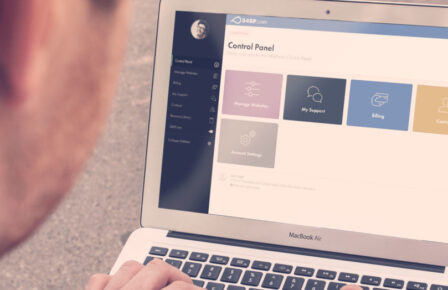Core Web Whats? If that was your initial thought about the title of this post, you might want to quickly bring yourself up to speed on what I think could be the most important change to search ranking signals in years.
Ranking signals are those elements that Google assesses to determine how your site stacks up in their search engine results. They keep the precise signals, and importance of each one, close to their chests. After all, if you knew all their secrets you might be able to game the system.
But every so often they let the wider world know of a new or big change to the way they track and rank websites. As they’re usually so tight-lipped on the secret sauce that makes up their algorithms, when they do make such a formal announcement it’s worth sitting up and taking note.
The last time Google announced an official ‘ranking signal’ change was wayyyy back in 2014 when they confirmed SSL would start to be a weak signal, growing in importance over time. Last year, the search behemoth confirmed that the set of metrics known as Core Web Vitals would also become an official ranking signal.
So what are Core Web Vitals?
Core Web Vitals are a series of metrics that Google uses to assess the usability and performance of a website. You can see the detailed Google FAQ on them here. It’s important to understand both of those elements; performance AND usability. Google are trying to understand how users experience your website, not just how fast a website loads.
Core Web Vitals can be loosely broken down into three elements that sound confusingly complex at first. Here’s what each means:
Largest Contentful Paint (LCP)
LCP is defined formally as, “The Largest Contentful Paint metric reports the render time of the largest image or text block visible within the viewport.” In simpler terms, this looks at the time it takes for a website pages’ main content to load in the browser. Google reckon an ideal LCP measurement is 2.5 seconds or quicker.
First Input Delay (FID)
FID “measures the time from when a user first interacts with a page (i.e. when they click a link, tap on a button, or use a custom, JavaScript-powered control) to the time when the browser is actually able to begin processing event handlers in response to that interaction.” or again in simpler terms, the time it takes for your webpage to become interactive – 100ms is the goal.
Cumulative Layout Shift (CLS)
CLS is the trickiest to get your head around and formally detailed as, “CLS measures the sum total of all individual layout shift scores for every unexpected layout shift that occurs during the entire lifespan of the page. A layout shift occurs any time a visible element changes its position from one rendered frame to the next.”
In a nutshell, have you ever loaded a website, gone to click on a link or button only for the website to shift or move around? That’s CLS in action right there. CLS is a measurement of a website jiggling around as it loads.
What do I need to know about Core Web Vitals?
Google previously announced that those three measurements will come together and be added into how they evaluate sites in search results this May (2021). That means if your site has poor Core Web Vitals scores and a competitor has better, you might lose out in search rankings.
What should I do?
First and foremost you need to be aware of these changes – so congrats – you’re already on your way if you read this far! Next up you need to understand how your current site stacks up against these new measurements.
Don’t panic if your site performs terribly – this isn’t uncommon. A lot of website owners will be hearing about this for the first time, and probably have never taken these factors into account when building their sites. There’s no suggestion that Google will suddenly and massively de-rank or remove sites from their index, but it could have a meaningful and lasting impact over the long term.
Last year I wrote a series of posts on getting to know Google Page Speed Insights with CWV squarely in mind. Page Speed Insights is a tool from Google that measures CWV, and I think it’s important to understand what Google thinks it knows about your site using their own tools. To get started on CWV I wrapped up all my posts on Google Page Speed Insights here.
I think we’re going to be hearing a lot more about Core Web Vitals in 2021, and indeed the years to come. Much like the massive move to SSL that happened over the previous three or four years, when Google tells you to take notice of something you’d be unwise to ignore them…



